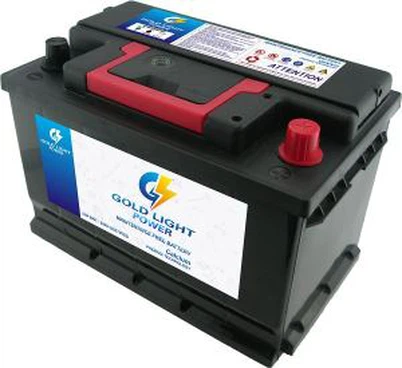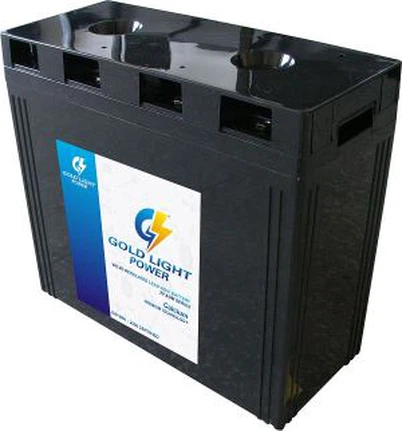What is the recommended charger for a batterie agm?
Leave a message
When it comes to AGM (Absorbent Glass Mat) batteries, selecting the right charger is crucial for ensuring optimal performance, longevity, and safety. As a reputable AGM battery supplier, I understand the importance of guiding customers through the process of choosing the most suitable charger for their AGM batteries. In this blog post, I will delve into the key factors to consider when selecting a charger for AGM batteries and recommend the types of chargers that are best suited for these batteries.
Understanding AGM Batteries
Before we discuss the recommended chargers for AGM batteries, it's essential to understand the unique characteristics of AGM batteries. AGM batteries are a type of valve-regulated lead-acid (VRLA) battery that uses a fiberglass mat to absorb and immobilize the electrolyte. This design offers several advantages, including:
- Maintenance-free operation: Unlike traditional flooded lead-acid batteries, AGM batteries do not require regular watering or maintenance.
- High energy density: AGM batteries can store more energy in a smaller and lighter package compared to other types of lead-acid batteries.
- Low self-discharge rate: AGM batteries have a low self-discharge rate, which means they can hold their charge for longer periods of time.
- Vibration and shock resistance: The fiberglass mat in AGM batteries provides excellent vibration and shock resistance, making them suitable for use in a variety of applications.
- Deep discharge recovery: AGM batteries can withstand deep discharges and recover quickly when recharged.
Key Factors to Consider When Selecting a Charger for AGM Batteries
When selecting a charger for AGM batteries, there are several key factors to consider, including:
- Charging voltage: AGM batteries require a specific charging voltage to ensure proper charging and prevent overcharging. The recommended charging voltage for AGM batteries is typically between 14.4 and 14.8 volts for a 12-volt battery.
- Charging current: The charging current is the amount of current that the charger delivers to the battery during the charging process. The charging current should be selected based on the battery's capacity and the charger's specifications. A general rule of thumb is to use a charging current that is no more than 20% of the battery's amp-hour (Ah) rating.
- Charging stages: AGM batteries require a multi-stage charging process to ensure proper charging and prevent overcharging. The charging process typically consists of three stages: bulk charging, absorption charging, and float charging.
- Bulk charging: During the bulk charging stage, the charger delivers a high current to the battery to quickly recharge it to approximately 80% of its capacity.
- Absorption charging: During the absorption charging stage, the charger reduces the charging current and maintains a constant voltage to fully charge the battery.
- Float charging: During the float charging stage, the charger maintains a low voltage to keep the battery fully charged and prevent self-discharge.
- Charger type: There are several types of chargers available for AGM batteries, including traditional chargers, smart chargers, and solar chargers. Each type of charger has its own advantages and disadvantages, and the choice of charger will depend on the specific application and requirements.
Recommended Chargers for AGM Batteries
Based on the key factors discussed above, the following types of chargers are recommended for AGM batteries:


- Smart chargers: Smart chargers are the most recommended type of charger for AGM batteries. These chargers are designed to automatically adjust the charging voltage and current based on the battery's state of charge and temperature. Smart chargers typically have multiple charging stages and can provide a safe and efficient charging process for AGM batteries.
- Solar chargers: Solar chargers are a great option for charging AGM batteries in remote locations or off-grid applications. These chargers use solar panels to convert sunlight into electricity and charge the battery. Solar chargers are typically designed to be weather-resistant and can provide a slow and steady charge to the battery over a long period of time.
- Traditional chargers: Traditional chargers are a simple and affordable option for charging AGM batteries. These chargers typically have a fixed charging voltage and current and do not have the ability to automatically adjust the charging process based on the battery's state of charge and temperature. Traditional chargers can be used for AGM batteries, but they require careful monitoring to prevent overcharging.
Examples of AGM Batteries and Recommended Chargers
To illustrate the recommended chargers for AGM batteries, let's take a look at some examples of AGM batteries and the chargers that are best suited for them.
- 12V AGM battery with a capacity of 100Ah: For a 12V AGM battery with a capacity of 100Ah, a smart charger with a charging current of 20A (20% of the battery's Ah rating) and a charging voltage of 14.4-14.8 volts is recommended. A solar charger with a capacity of at least 20 watts can also be used to charge the battery in remote locations or off-grid applications.
- 24V AGM battery with a capacity of 200Ah: For a 24V AGM battery with a capacity of 200Ah, a smart charger with a charging current of 40A (20% of the battery's Ah rating) and a charging voltage of 28.8-29.6 volts is recommended. A solar charger with a capacity of at least 40 watts can also be used to charge the battery in remote locations or off-grid applications.
Importance of Using the Right Charger for AGM Batteries
Using the right charger for AGM batteries is crucial for ensuring optimal performance, longevity, and safety. Using the wrong charger can lead to overcharging, undercharging, or damage to the battery. Overcharging can cause the battery to overheat, which can lead to premature failure and reduced battery life. Undercharging can cause the battery to sulfonate, which can also lead to reduced battery life and performance.
Conclusion
Selecting the right charger for AGM batteries is crucial for ensuring optimal performance, longevity, and safety. As a reputable AGM battery supplier, I recommend using a smart charger or a solar charger for AGM batteries. These chargers are designed to provide a safe and efficient charging process for AGM batteries and can help to extend the battery's life and performance. If you have any questions or need further assistance in selecting the right charger for your AGM batteries, please do not hesitate to contact us. We are here to help you find the best solution for your specific needs.
If you are interested in purchasing high-quality AGM batteries or need more information about our products, please feel free to contact us for procurement discussions. We offer a wide range of AGM batteries, including 2V200AH OPzV Battery, GEL Tubular Plate Battery UPS EPS 5years Warranty and 2V300AH OPzV Battery Deep Cycle Solar Power Battery Valve Regulated Lead Aicd Battery 20 Years Life. Our team of experts will be happy to assist you in finding the right battery for your application.
References
- Battery University: Understanding AGM Batteries
- Trojan Battery Company: AGM Battery Charging Guidelines
- Interstate Batteries: Choosing the Right Charger for Your AGM Battery





